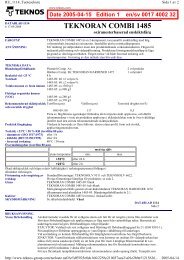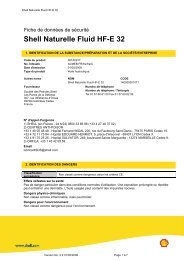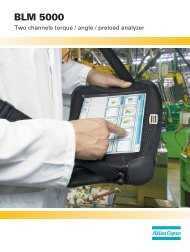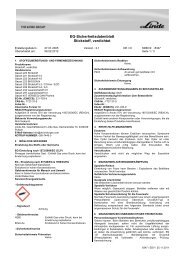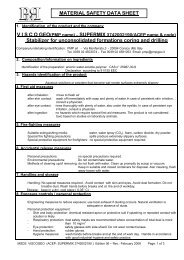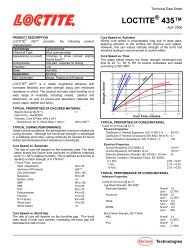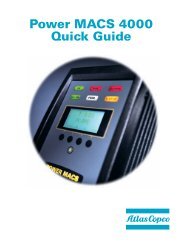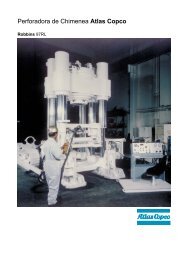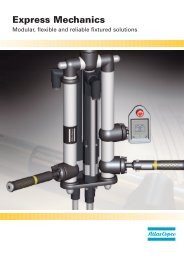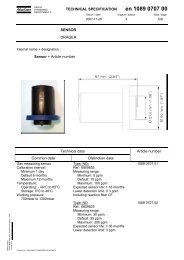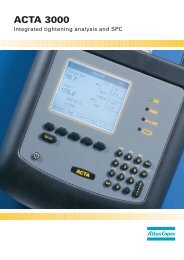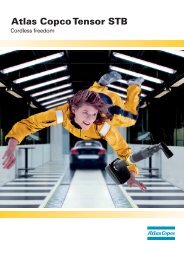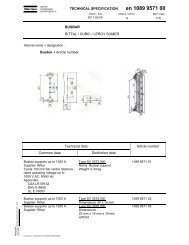Ergonomics - Atlas Copco
Ergonomics - Atlas Copco
Ergonomics - Atlas Copco
You also want an ePaper? Increase the reach of your titles
YUMPU automatically turns print PDFs into web optimized ePapers that Google loves.
126<br />
coated with dust or damaged by aggressive<br />
dust particles. Inhaled particles will<br />
be transported back and swallowed or<br />
handled by the lymph system. Some will<br />
be encapsulated in the alveoli and reduce<br />
their capability to exchange oxygen and<br />
carbon dioxide. Most of the dust we inhale<br />
is harmless or inert.<br />
Toxic particles<br />
Dust from certain metallic substances such<br />
as manganese, vanadium, cadmium and<br />
beryllium can give rise to severe inflamma-<br />
tion of the lung tissues. This condition is<br />
similar to pneumonia, varying in seriousness<br />
depending on the degree of exposure and the<br />
type of dust involved. Dust from a number of<br />
substances penetrates the wall of the alveo-<br />
lus and is carried out in the lymph system.<br />
These substances include, for instance, lead<br />
and cadmium, which can give rise to symp-<br />
toms of intoxication and which can only be<br />
removed from the body very slowly.<br />
Drop velocity<br />
Particles in aerosols of interest have a very<br />
slow drop velocity. For example, for spheri-<br />
cal particles with the density of water,<br />
1g/cm 2 , drop velocity in air at a temperature<br />
of 20ºC is shown in table 3.14.<br />
The table illustrates that respirable<br />
dust remains floating in the air for a long<br />
time and, as mentioned previously, the<br />
concentration in the operator’s breathing<br />
zone depends heavily on the ventilation of<br />
the work room.<br />
If the operator works in a fettling booth<br />
and air is sucked away from it, this will create<br />
an air flow past the operator. If the velocity ex-<br />
ceeds 0.5 m/s, the air flow will be experienced<br />
as a draught by the operator.<br />
If dust is generated by the process,<br />
clouds of dust with a velocity of higher than<br />
0.5 m/s can move towards the operator and<br />
expose him. The dust clouds can then turn<br />
back into the fettling booth and move past<br />
the operator again. Typical for the scatter of<br />
respirable dust is that the particles follow<br />
the motion of the air in the room.<br />
An efficient general ventilation system will<br />
reduce the amount of particles in the air. An<br />
inefficient system will increase the number of<br />
particles and oil mist during the working day.<br />
To find out the degree of operator exposure,<br />
Dia. (µm) Drop velocity (cm/s)<br />
1 0.003<br />
5 0.07<br />
10 0.3<br />
50 7<br />
100 30<br />
Table 3.14 Drop velocity is highly dependent<br />
on particle size.



